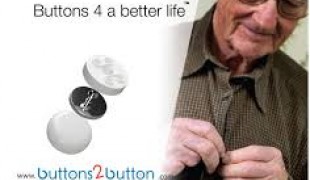- 9684
- 543
- 7
- 9
- 0
- Help Ukraine
About the solution
The helmet contains small, sensitive microphones, signal amplifiers, vibration components, and effects circuits. It adapts to any head shape. Dials to adjust the sound and volume are mounted on the side.
"I first became aware that experiencing sound through bone conduction was possible when I lost hearing in one ear due to a tumor (acoustic neuroma). One of the possible ways to "fix" monophonic hearing is to drill a screw into the skull and attach a receiver to it, such that sound waves are converted into vibrations in the skull. Having an open wound just behind a non-functioning ear was not an ideal solution, so I let my body adjust to having one ear. (...) One day as I sat down at the piano, I suddenly became aware that the entire instrument felt alive in my hands, each note traveling up my arms and giving a surprisingly rich experience of sound. I decided to adapt bone conduction technology into a helmet, in order to share my emerging haptic perception of sound without the necessity of surgery. Re-wired consists of a helmet that leaves the wearer free to roam their environment and experience a physical sensitivity to sound", Amelia explained.
Adapted from: http://www.ameliamarzec.com/rewired/
https://youtu.be/AaoNai1fCU8
This solution shall not include mention to the use of drugs, chemicals or biologicals (including food); invasive devices; offensive, commercial or inherently dangerous content. This solution was not medically validated. Proceed with caution! If you have any doubts, please consult with a health professional.
DISCLAIMER: This story was written by someone who is not the author of the solution, therefore please be advised that, although it was written with the utmost respect for the innovation and the innovator, there can be some incorrect statements. If you find any errors please contact the patient Innovation team via info@patient-innovation.com
-
-
436
-
7
-
7271

Woman creates magnetic buttons to help stepfather who has Parkinson's disease get dressed
(SELF)-CARE: DRESSING: Dressing independently.
Grip
CAREGIVING
Parkinson's Disease
Multiple Sclerosis
Bone Disorders (Decalcification, Bone Deformity, Bone Fracture, Bone Infection)
diabetes type 2
Assistive Daily Life Device (to help ADL)
Body-Worn solutions (Clothing, accessories, shoes, sensors...)
Muscle weakness
Tremors
Difficulty coordinating movements
Stiffness or rigidity (difficulty moving)
Limited range of motion
Muscle pain or stiffness
Loss of balance
Reduced grip force (grip)
Trouble with fine motor skills (e.g., writing, buttoning clothes)
Loss of muscle coordination
Muscle cramps or spasms
Joint deformity
Muscle twitching
Numbness or tingling in the extremities
Joint pain or swelling
Promoting self-management
Managing Neurological Disorders
Promoting inclusivity and social integration
Caregiving Support
Endocrinology
Neurology
Orthopedics
Rheumatology
United States
-
-
-
680
-
0
-
10399

Proloquo4Text – App to help people communicate
CAREGIVING
COMMUNICATION: Communicating, whether by speaking, listening, or other means
Social interaction
Autism
Cerebral Palsy
Amyotrophic Lateral Sclerosis
Laryngeal Disorder
Brain Stroke
App (Including when connected with wearable)
Difficulty speaking or understanding speech
Promoting self-management
Managing Neurological Disorders
Building Supportive Community Relationships
Promoting inclusivity and social integration
Caregiving Support
Maxillofacial Surgery
Medical Genetics
Neurology
Otorhinolaryngology
Solutions for Disabled people
Netherlands
-
-
-
312
-
0
-
3316

FacePalm writting
CAREGIVING
Social interaction
Blindness
Neurofibromatosis
Strategy/Tip
Vision problems
Difficulty speaking or understanding speech
Hearing loss or ringing in the ears (tinnitus)
Promoting self-management
Managing Neurological Disorders
Promoting inclusivity and social integration
Improving Speech and Communication
Caregiving Support
Medical Genetics
Ophthalmology
Otorhinolaryngology
Ireland
-
 en
en